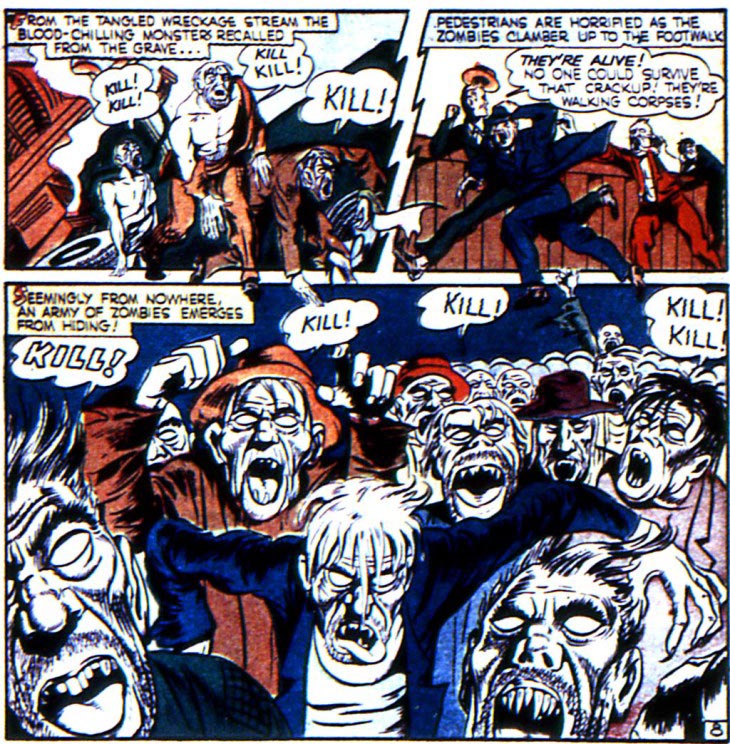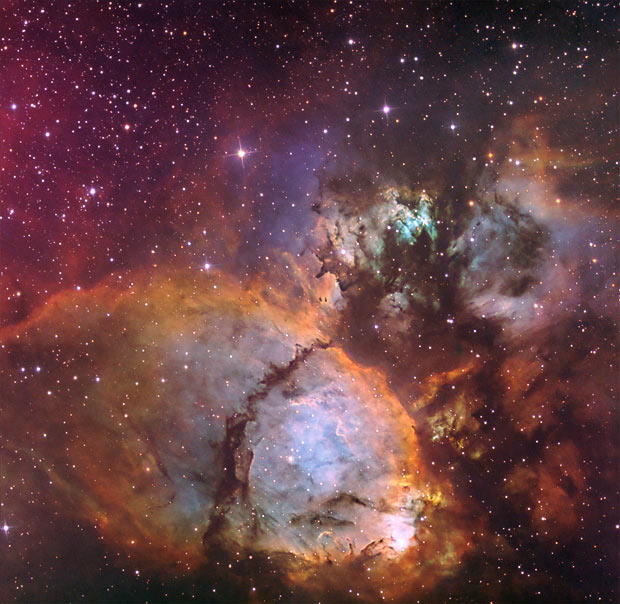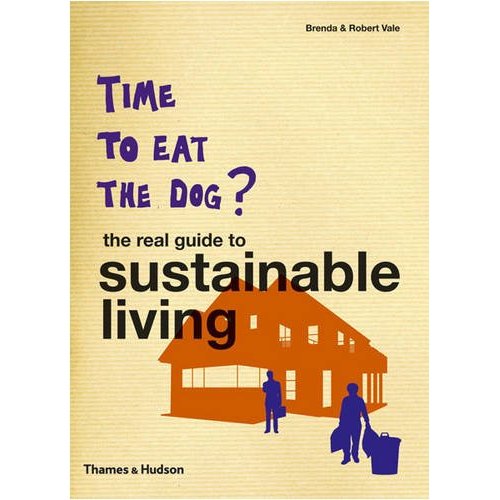BEFORE ROMERO: Joe Simon & Jack Kirby’s zombies from All Winners #1, Summer 1941
December 28, 2009
Click on image for larger size. The bottom 2/3 of page 8 of Captain America and the Case of the Hollow Men.
“How to kill a dead man? That was the horrible problem which CAPTAIN AMERICA and BUCKY had to solve before they could defeat the hideous menace who was the lord of death . . .”
Dog Books Worth Reading
December 28, 2009
The Year in Space Photography 2009
December 23, 2009
The attitude this holiday season is very much anti-Big Government (whatever that even means in a country of 308 million people). There’s a widespread doctrine today that says the gummit cain’t never do nuthin right. So here’s something that, I think, Big Government is doing well: taking pictures of our amazing, astounding universe.
The shot above is a Hubble false-color image of glowing gas and dark dust clouds in a star-forming region in the constellation Cassiopeia just over 6,000 light-years away. Click on image for larger size.
There’s a great selection of images at the Telegraph UK site here, taken in 2009 from the Hubble Space telescope, the Chandra X-Ray telescope, and the Spitzer Space telescope. Your tax dollars at work.
I always find these images of the vasty deep sky humbling. In one way they seem to be the ultimate rebuke to religion. Oh yeah, obviously the folklore and superstition of a Bronze Age desert tribe is the best way to filter and interpret our knowledge of the Universe. For sure.
I’m no good at being noble, but it doesn’t take much to see that all the problems of our little planet don’t amount to a hill of beans in this crazy Universe. Someday you’ll understand that. Here’s looking at you, Cassiopeia.
“Time to Eat the Dog: The Real Guide to Sustainable Living” — The environmental cost of pets
December 22, 2009
Time to Eat the Dog? The Real Guide to Sustainable Living by Robert and Brenda Vale published this year in England raises the thorny question of whether or not you can justify the carbon foot print of your pet.
I’ve posted an excerpt of Thorstein Veblen’s thoughts on the extravagance of dogs here on the Cynodictis Project page. Veblen’s governing principle was that every expenditure about subsistence was “conspicuous consumption” a purchase whose real aim is to communicate something about the buyer. Owning a dog says to the world, in effect, I have so much income I can afford to waste a portion of it feeding and caring for a non-productive member of the household.
I’ve always thought of this concept in terms of useless rooms in houses. I grew up, at least part of the time, in a house which had a living room that was for show purposes only. The furniture wasn’t wrapped in thick plastic but no one used the room. It was understood. The dog was not allowed in there either, under any circumstances. The living room was for entertaining on a certain level. Evidently did not circulate with the other A-listers because our living room was used once a year or less.
But should we really eat our dogs as the Vales suggest? Even if we are feeling a bit peckish?
They calculate that a medium size dog eats around 360 pounds of meat and 210 pounds of cereal annually. They equate this with the energy consumption of driving a 4X4 SUV 6,200 miles a year, including the energy required to build the car. I don’t suppose that since our family owns only a single car, a Prius at that, it comes close to offsetting our two ravenous Labradors.
But that’s not the only negative impact our dogs have on the environment.
The Vales claim that dogs decrease the biodiversity in the areas they are walked. Why would the presence of a domesticated animal in a suburban environment (where most companion dogs live) decrease the local biodiversity? How much of a decrease and what’s the impact of that? I’d like to see and understand the science behind this contention.
They also say that dog feces are responsible for high bacterial levels in rivers and streams, ultimately killing off aquatic life. Again, this statement exists in a vacuum. Surely the run off of excrement from our present method of factory farming, especially chicken and pig farming, are a much greater factor in the fecal pollution of our waterways?
New Scientist magazine had an independent expert calculate the environmental costs of dog ownership and he came to the same conclusions as the Vales: “Owning a dog really is quite an extravagance, mainly because of the carbon footprint of meat.”
Obviously, someone like me is going to question the specific degree to which pet owning contributes to our use of limited resources. Every expenditure has costs. The point of this provocatively titled book is that every decision we make has an environmental impact.
For most of us this isn’t part of our calculation when considering a purchase, the way we wash our clothes or burial options. For example, I didn’t know that the biggest “cost” of clothes is in our continually washing them.
So I don’t think that anyone really wants you to consider eating your (probably delicious) dog. It makes for a grabber of a title, though.
Dali 3D Painting from 1977
December 10, 2009
 Click on image for larger size.
Click on image for larger size.
Dali’s Hand drawing Back the Golden Fleece in the Form of a Cloud to Show Gala the Dawn, Completely Nude, Very, Very Far Away Behind the Sun
Two stereoscopic panels, oil in canvas, 1977, 23.5 X 23. 5 inches
Kids, Don’t Try this at Home! Professional Drivers on Closed Course! 3 Versions of “Cocaine Blues”
December 5, 2009
Another artist who combines historic levels of drug abuse, runs of startling creative energy and great longevity like the subject of my previous post, Anita O’Day is Keith Richards. Here’s Keith — without his famous band mates — performing one of the first blues he learned to play “properly.”
Hey, baby, come here quick / This old cocaine’s making me sick.
Cocaine Blues, a traditional blues classic, was originally recorded in 1927 by Luke Jordan. But perhaps the most influential early version is the one below, by the Reverend Gary Davis. Almost all other modern versions owe a debt to this one.
Cocaine — running all around my brain.
Cocaine’s for horses, it’s not for men / They say it’ll kill you, but they don’t say when.
It takes a full minute of screen time — wait for it — until they get down to playing but when they finally do Jackson Browne and David Lindley knock out an awesome duet version of Cocaine Blues on guitar and violin. Lindley also famously handles the falsetto at the end of Browne’s hit, The Load Out/Stay.



